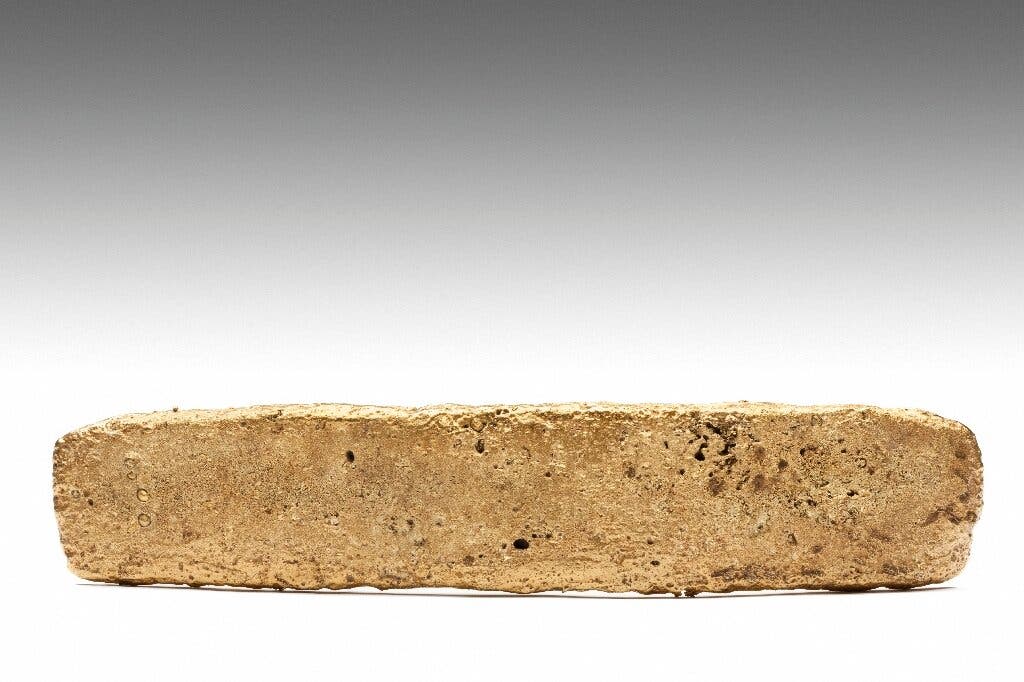As conquistadors were pillaging Aztec treasure 500 years ago, one bar of gold stubbornly refused to play ball — and was found by accident in a Mexico City park in 1981.
The solid bar of gold, weighing in at a hefty 1.93 kilograms, was found by a construction worker during excavations for a new building next to the Alameda park in Mexico City. For 39 years, its origin remained a mystery.

However, a new study used X-ray analysis to understand the nature of the metal and its origin. According to the results, the gold bar was likely part of the Aztec treasure looted by Hernan Cortes and his Spanish conquistadors in the sixteenth century.
Oldie but goldie
“The so-called ‘Noche Triste’ is among the episodes of the conquest that will be remembered this year, and there is only one piece of material evidence from it: a gold bar that sank 500 years ago in the canals of Tenochtitlan, and which recent analysis confirms came from the (Spaniards’) flight,” Mexico’s National Institute of Anthropology and History (INAH) said in a statement.
There has been a lot of interest in Mexico ever since the 1970s in analyzing the chemical composition of historical artifacts found throughout the country in order to better understand the native human populations that called this area home before European colonists moved in.
The new research was carried out at INAH and National Autonomous University of Mexico (UNAM) with the goal of discovering the gold’s origin. The team used fluorescent X-ray chemical analysis in order to determine the content of gold, silver, and copper in the bar and gain some insight into its origin. This process is “a proven multi-elemental technique of high sensitivity, non-destructive, non-invasive, and extremely fast” according to Dr. José Luis Ruvalcaba, of UNAM reports INAH (link in Spanish).
The ingot was analyzed alongside “six pieces of the Moctezuma Plume of the Weltmuseum in Vienna, and the Texcoco Warrior of the Cleveland Museum of Art”, INAH adds. The artifacts had very similar composition between themselves as well as to others uncovered in Templo Mayo, in Mexico City. Further analysis showed that the bar had a very different make-up from artifacts from other parts of Mesoamerica, suggesting that the gold bar was made by the local Aztecs.
So what’s the link between Mexico City and the ancient Aztecs? Well, they used to live there. Mexico City is built on the remains of the Aztec capital Tenochtitlan. The 4.4-pound, 11-inch (26 centimeters) long bar of gold was likely produced here and stolen during the “Noche Triste,” or “Sad Night,” when conquistadors sacked the city and retreated (for a while) with their pilfered riches.
The Noche Triste took place on June 30, 1520, and involved the infamous conquistador Hernan Cortes and his men. Cortes had launched an expedition into the area in 1519. They reached Tenochtitlan and were treated as guests by the Aztec emperor Moctezuma for a while. However, they would soon begin appropriating his treasure and treating him as a hostage in all but name.
Since Cortes embarked on this adventure without royal consent and the Spanish governor in Cuba was instructed to send soldiers to arrest him. He led part of his troops to do battle against them (he won) leaving Pedro de Alvarado in charge. In his absence, Pedro and the remaining conquistadors slaughtered the city’s nobles and priests to prevent any resistance.
Although the locals did rise up to drive the Spaniards away, they managed to escape with, in true conquistador fashion, as much treasure as they could possibly carry.
“This bar is a key piece in the puzzle of this historical event,” INAH said.
Sometime during their flight from the city, however, someone dropped the gold bar — likely in one of the canals the city was famed for — where it waited, defiantly, until today.









